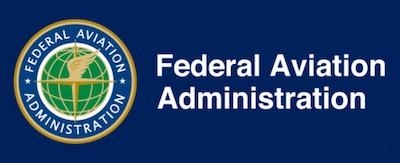Some Formulas May Result In Adverse Engine Operation
An FAA Special Airworthiness Information Bulletin (SAIB) has been issued providing general guidance on the use of Kathon FP1.5 and Biobor JF biocide jet fuel additives that can be used to supplement existing original equipment manufacturer procedures.

FAA approved aviation fuel operating limitations may be listed in the product’s aircraft flight manual, type certificate data sheet (TCDS), installation manual, service instructions or manuals, or as limitations associated with a supplemental type certificate. Many of the fuel specifications allow for the use of a biocide to control microbiological growth in the fuel system of the aircraft. The two most common biocides in use today are Kathon FP1.5 and Biobor JF.
Microbiological contamination is caused by microorganisms (bacteria, molds, yeasts) that grow in water and feed off the hydrocarbons in the fuel. Good housekeeping to prevent water accumulation in the fuel tanks is the most effective means to prevent this contamination. In case microbiological contamination is detected and needs to be treated with biocides, all maintenance personnel, aircraft owners and operators are expected to follow up-to-date instructions in the engine and aircraft manufacturer’s Aircraft Maintenance Manuals (AMMs) to ensure that the correct method and dosage is applied. In case of discrepancies, e.g. due to different update cycles of aircraft documentation, the manufacturer should be contacted for further advice.
In engines and aircraft where biocides are approved for use, the manufacturers provide procedures in their AMMs for the application of these biocides into the aircraft fuel tanks. Several recent events have been documented showing adverse engine effects on the ground and in-flight after application of a biocide treatment of the aircraft. Two of these events were the result of overdosing the fuel system beyond the recommended dosage, however, one event has shown no evidence of misapplication.
While lack of clarity of the AMM procedures, or lack of adherence to those procedures by the maintenance personnel, may have contributed to the overdosing events, evidence suggests that some engine models are more sensitive to Kathon FP1.5 concentration than others. As a result, DuPont, the manufacturer and distributor of Kathon FP1.5, has recommended discontinuing the use of Kathon FP1.5 for aviation-related products. General Electric is also taking measures to remove Kathon FP1.5 from the approved fuels additives across all their engine products while additional testing is being conducted. This SAIB provides recommendations in response to these recent events and notes publications for the proper continued use of biocide in fuel for products for which it is approved.
There is a lengthy list of recommendations at the FMI link below. Operators should consult their Aircraft Flight Manuals (AFMs), AMMs, the latest service documents, and communications from the manufacturers of their engines and aircraft to determine which biocide additives are approved for use on their aircraft and engines and adjust their procedures to reflect the latest approvals.
(Source: FAA)
 Airborne-NextGen 11.04.25: Anduril YFQ-44A, Merlin SOI 2, UAV Rulemaking Stalled
Airborne-NextGen 11.04.25: Anduril YFQ-44A, Merlin SOI 2, UAV Rulemaking Stalled NTSB Prelim: Elmore Travis C Searey
NTSB Prelim: Elmore Travis C Searey ANN's Daily Aero-Linx (11.03.25)
ANN's Daily Aero-Linx (11.03.25) ANN's Daily Aero-Term (11.03.25): On-Course Indication
ANN's Daily Aero-Term (11.03.25): On-Course Indication Aero-News: Quote of the Day (11.03.25)
Aero-News: Quote of the Day (11.03.25)



